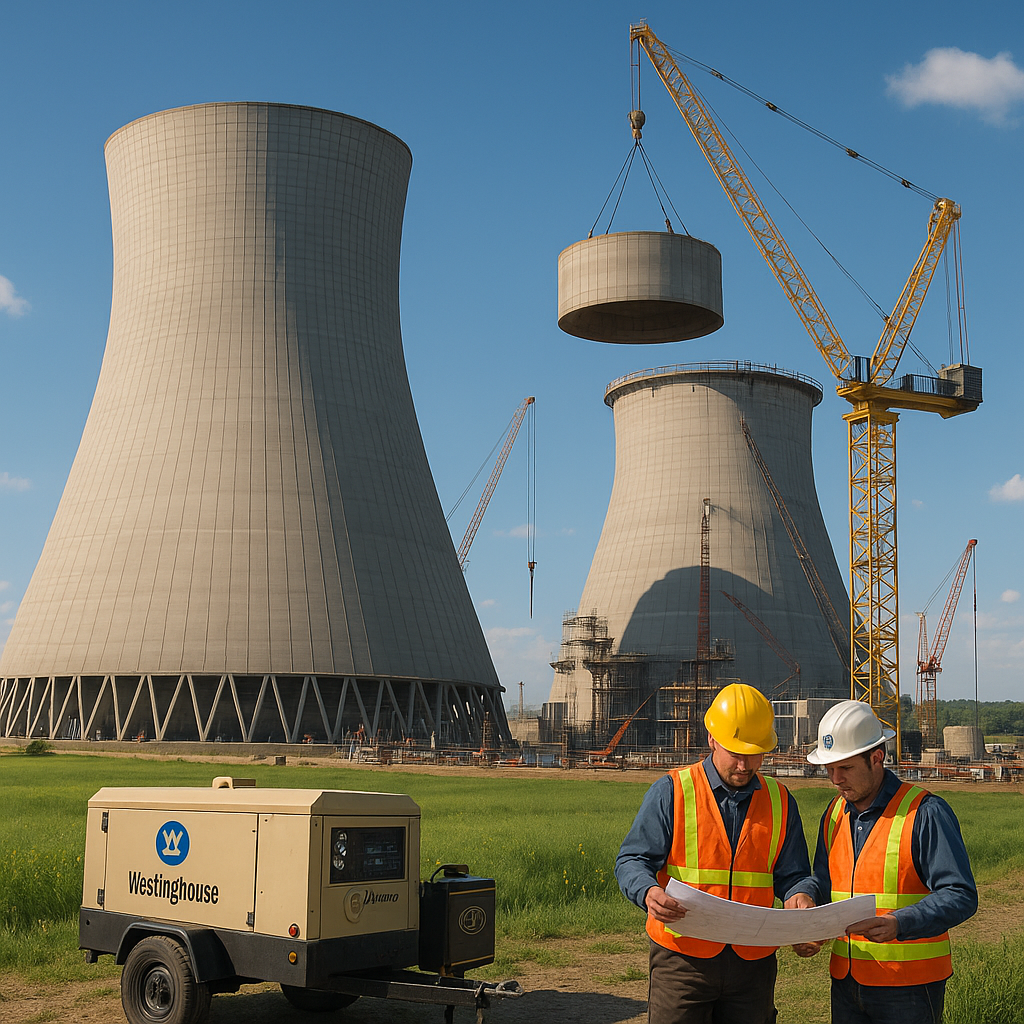Westinghouse dropped a bombshell last week. Ten new nuclear reactors on American soil, construction kicking off before 2030.
It's not just another energy announcement—it's the clearest signal yet that nuclear power is roaring back from decades in the wilderness. The timing couldn't be more significant: the reveal came during that buzzy Carnegie Mellon University conference where tech, energy, and finance heavyweights collectively pledged over $90 billion toward data centers and power infrastructure.
I was speaking with an energy analyst after the announcement who summed it up perfectly: "This is Westinghouse planting a flag in the ground and declaring the nuclear winter officially over."
Look, we've seen false nuclear dawns before. But several factors make this moment different.
For one, those power-hungry AI data centers (you know, the ones making your electric bill look quaint by comparison) need reliable juice 24/7. Wind and solar alone won't cut it. Nuclear suddenly looks like the reliable backbone our increasingly digital economy desperately needs.
The global context matters too. Governments worldwide are embracing nuclear again—not just talking about it, but actually changing policies and opening checkbooks. It's what happens when climate goals crash headlong into energy security concerns.
And then there's the uranium market itself.
Having tracked commodity markets for years, I'm seeing a textbook supply crunch developing. Current projections put 2025 uranium production at roughly 187.9 million pounds of U₃O₈. That's nowhere near enough to satisfy reactor demand. Not even close.
The market fundamentals have been tightening for years while investors chased electric vehicles and battery metals. (Remember when everyone was obsessed with lithium stocks? How'd that work out?)
The Sprott Physical Uranium Trust has only intensified the squeeze, raising capital and essentially removing physical uranium from circulation.
The numbers tell the story. Uranium spot prices jumped nearly 10% in June alone, hitting $78.56 per pound. July hasn't seen any relief. Term prices—the ones that really matter for producers and utilities—are holding steady at $80/lb.
What does that suggest? Producer discipline remains intact, and utilities are scrambling. Their stockpiles are dwindling, and they know it.
Most commodity cycles follow a predictable pattern, but uranium has always been... different. The lead times are excruciating—we're talking years, sometimes a decade, to bring significant new production online. Not to mention the regulatory hurdles, which make opening a new bank look simple by comparison.
The historical context here is crucial. America hasn't seen genuine nuclear construction momentum since before Three Mile Island scared the bejesus out of everyone in 1979. The industry's spent forty-plus years in regulatory purgatory, with projects routinely canceled or drowning in cost overruns.
Hell, Westinghouse itself filed for bankruptcy protection in 2017, crushed by nuclear construction disasters.
So what changed?
Three things, primarily. Climate change has shifted the political calculus—nuclear is emission-free and doesn't care if the sun's shining or the wind's blowing. The AI revolution created monstrous demand for baseload power. And geopolitical tensions (Russia, Ukraine, you name it) suddenly made energy independence look pretty appealing.
Which companies stand to benefit from this nuclear renaissance? That's the billion-dollar question.
The obvious candidates are uranium miners and developers with assets in stable jurisdictions. Cameco comes to mind—they've got established operations and contracts. But don't overlook the broader ecosystem.
Engineering firms with nuclear expertise might be the real sleeper hits here. The nuclear supply chain has withered over decades of neglect, creating bottlenecks but also massive opportunities for companies that can fill the gaps.
(Westinghouse remains privately held after its restructuring, so you can't directly invest there. But their suppliers and partners? Different story.)
The macro picture points to power infrastructure becoming THE investment theme of the next decade. Think about it—we're simultaneously electrifying transportation, digitizing everything under the sun, and trying to decarbonize the entire economy. Any one of these trends would strain our grid; together, they're a perfect storm.
I recently toured a data center in Virginia—just one of dozens being built—that will consume as much electricity as a small city. Multiply that by hundreds across the country, and you begin to understand the scale of what's coming.
In this context, Westinghouse's announcement isn't just about 10 new reactors. It's the canary in the coal mine (ironic metaphor intended) signaling a massive capital cycle directed toward power generation.
The market is only beginning to price this in.
The nuclear renaissance isn't just coming—it's here. And this time, it might actually stick around.
